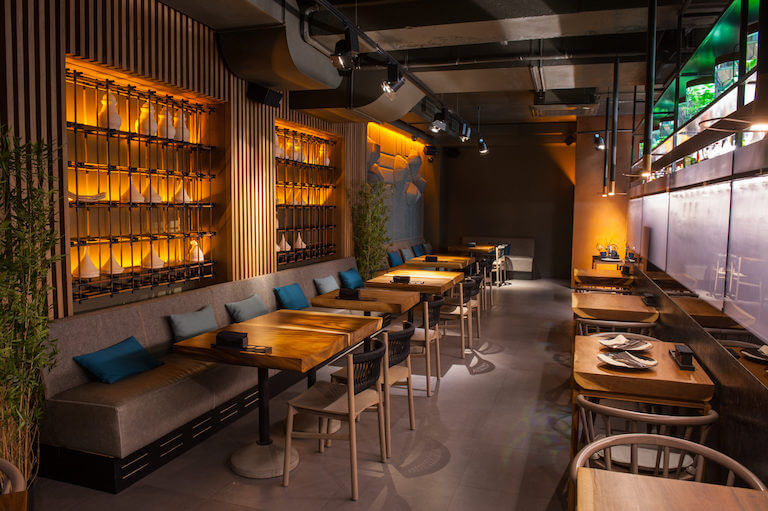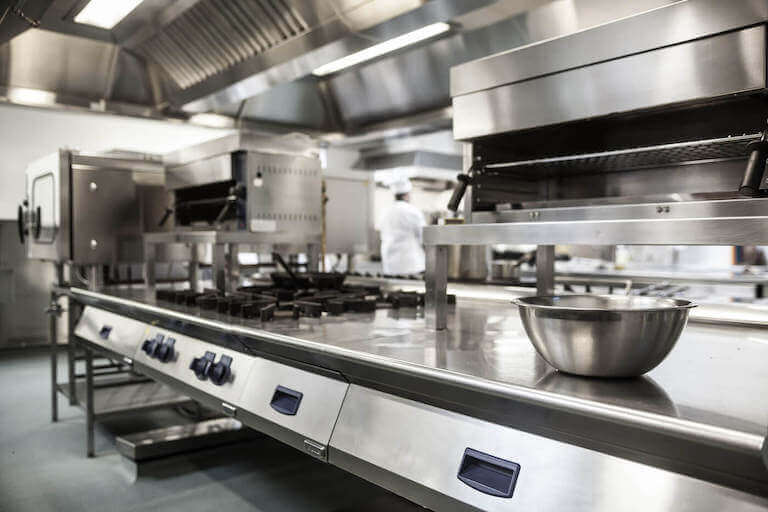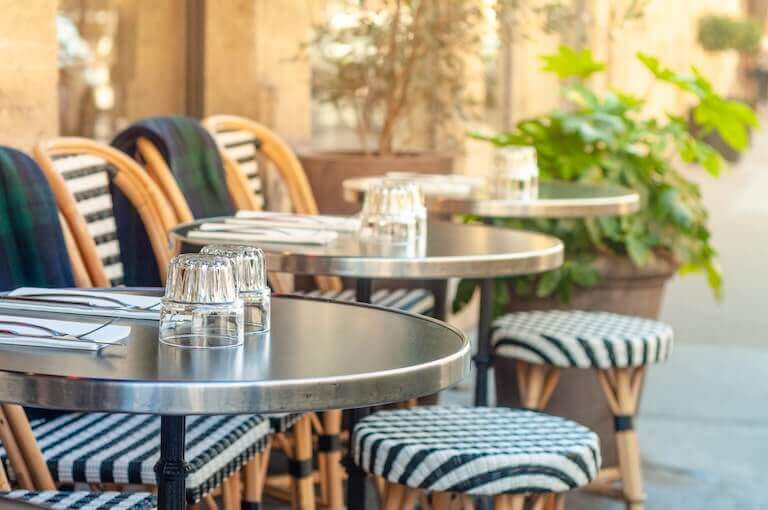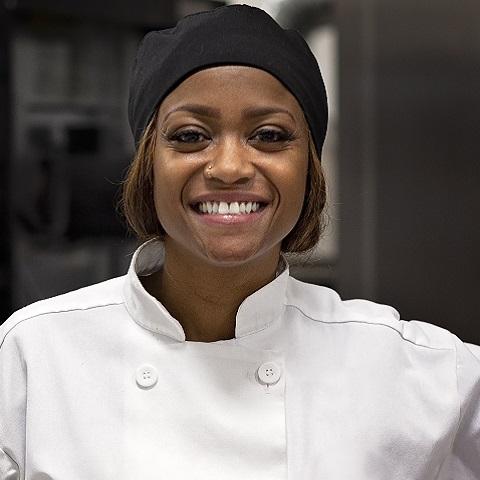Estimating costs for a new restaurant is a lot like looking at housing prices—the price you can expect to pay depends on location, the size of the restaurant, and the quality of your equipment and design.
One survey of restaurant owners across the country showed that the median cost to open a new restaurant was $375,000, or $113 per square foot. However, the lower quartile of respondents reported their restaurants cost an average of $175,500 ($59 per square foot) to start while the upper quartile reported average opening costs of $750,500 ($177 per square foot).
How much does it cost to start a restaurant? Well, these reported costs indicate just how variability there is. That said, as you create your business plan and start to explore funding options, considering the following restaurant startup costs can help you get an estimate of what you may pay.**
Estimated Restaurant Startup Costs**
Leased restaurant space: $3,000–$8,750 per month
Permitting, licensing, and legal fees: a few hundred to a thousands of dollars, varies depends on permits required as well as local costs
Remodeling and renovations: $24–$143/sq ft or $70,000–$472,500
Restaurant equipment and cooking tools: $40,000—$196,000
Restaurant furniture and supplies: varies depending on the size of the restaurant and quality of furnishings—chairs alone can range from $26–$300+
Pre-opening food, beverage, and labor costs: varied
Marketing costs: approximately 3-6% of monthly sales
Buying Versus Leasing Your Restaurant Space
Your upfront costs will likely be much higher if you buy a restaurant space versus if you rent one. And of course, the cost of that space may vary dramatically based on the square footage and market. Here are some cost details for both leasing and buying.
Leasing Your Restaurant Space
Rents for commercial spaces are often calculated on a dollar-per-square-foot basis. Therefore, the size of the restaurant can have a big impact on the cost of the lease, as can the area where the restaurant is located. When you take these two factors into account, you’ll find that restaurant leases can widely vary in cost.
A recent survey of restaurant owners found that most leases cost between $3,000–$8,750 per month. For your first payment, you’ll typically be responsible for at least the first month’s rent and a refundable security deposit (often equivalent to the first month’s rent) upon signing.

Both the size and quality of restaurant space can impact the lease cost.
Buying Your Restaurant Space
If you plan to buy your restaurant space, expect to pay much more up front!
The cost to buy a restaurant can vary wildly by size and market, but the median cost to buy a restaurant in 2020 was $200,000 while the average sale price was $410,000. To get a better sense of what restaurants cost in your area, you can connect with a local real estate agent. The down payment can vary depending on the financing you use for the purchase. Many commercial loans and Small Business Administration (SBA) loans require a down payment of 10% to 35% of the overall loan amount.
Permitting, Licensing, and Legal Fees
To cover your legal bases, you’ll need to comply with certain permitting and licensing rules. And some of these come with a cost.
To start, you may need a business license. The fees for these vary by state and can range from $50 to several hundred dollars. Check with your Secretary of State to learn about your local business license requirements.
You may need a Certificate of Occupancy from your local building inspector when any construction is complete. The costs vary depending on location, but you can expect to pay around $250. You’ll also need some licensing in order to serve food, usually from your local health department. And if you plan to serve beer, wine, or spirits, you’ll need some kind of liquor license. Food manager permits can cost a few hundred dollars, and liquor licenses range from $100 (in Idaho) to nearly $14,000 (in California).
You may also need to pay for fees and permits to hang signs. These costs vary depending on location as well as the size of the sign. In Chicago, the fees to install an on-premise sign can range between $250–$1200 depending on the size of the sign, and in Austin sign review fees and annual license cost between $124 and $187 depending on the type of sign. Check with your city to determine what you can expect to pay for sign fees and permits.
You may also have to pay entertainment fees if you plan to play music or sports broadcasts, or install gaming equipment like pool tables or gambling machines.
And finally, hiring a lawyer to help you navigate all of these legalities is a good way to avoid missteps. Business lawyers charge $150–$325 per hour, but they can save you major headaches down the line.

Spending time going over your numbers and permits can save you money in the long run.
Remodeling and Renovations
Once you’ve secured your space, you’ll probably want to do some renovations to make it your own.
These costs will vary widely based on the market, the size of the property, and the standard of your renovations. For example, a fast-casual restaurant will probably use less expensive finishes than a fine dining restaurant.
One estimate says that the national average cost for “mid-level” finishes is about $160/sq ft for a 2,000 sq ft property. You can use this construction estimate calculator to get an idea of the cost for your market and finish standard.
Kitchen Equipment and Cooking Tools
Kitchen Equipment
This has the potential to be the largest line item in your cost planning. Reliable kitchen equipment is vital to anyone who plans to serve food, and spending money on new or high-quality equipment now can limit costs down the line! Depending on the type of restaurant, you may need ovens, flat tops, and fryers for cooking, a hood vent for ventilation, a commercial dishwasher, refrigerators and freezers, and more.
The Webstaurant Store, which is in the business of outfitting restaurants with equipment, estimates costs of $75,000 to $115,000 for the average restaurant to get their equipment. You may be able to save by buying second-hand equipment or leasing some larger items, like your commercial dishwasher or walk-in cooler.

Purchasing the right equipment is essential, but it can also be expensive.
Cooking Utensils
In addition to your equipment, you’ll need to supply your kitchen with smallwares and utensils. Pots and pans, spatulas and spoons, sheet pans, mixing bowls, knives, scales, and more must be purchased in advance, so your cooks have the right tools.
Point of Sale (POS) System
Your POS system is how the servers and bartenders communicate with the kitchen. It also ensures that customers get checks with the right totals, and it may also help you run financial reports at the end of the day, week, and month.
This cost will depend on how many terminals and how much sophistication you need. A small counter deli may just need one basic terminal, while a larger restaurant may have half a dozen terminals, plus handheld ordering tablets for the servers. Expect to pay $500 to $10,000 for your POS hardware plus additional monthly fees.
Restaurant Furniture and Supplies
This is another area where your restaurant style and size will likely have a major impact on your costs. You’ll need to outfit your dining room with tables and chairs, barstools, server stations, and a host stand. You’ll also need plates, silverware, glassware, and possibly linens. A chic fine-dining restaurant will want to spend big on these customer-facing items to create the right ambiance. But a casual soup-and-sandwich lunch spot can have much more simple and affordable furniture and supplies.

Chairs and tables can range from a few hundred to a few thousand dollars depending on style and quality.
If you want to get an idea of the range of costs, just consider plates! You can get plates for just a few dollars each, or you can get them for more than $35 each if you want to splurge.
As for size, a small lunch cafe could only seat 30, so it may not need a high volume of supplies. A huge pizza restaurant, on the other hand, can seat hundreds and will need a much larger volume of tables, chairs, and smallwares.
Pre-Opening Expenses
Costs like food, beverages, and labor will be recurring monthly expenses. But you’ll also have to invest in these costs before you open your doors.
Food must be purchased before you open, so you’ll have something to serve. But you may need to buy ingredients even further in advance if your chef has to work on recipe development, and so they can train the rest of the kitchen team.
You’ll also need to stock your bar—whether you serve alcohol or not. Even if you only serve water and soda, you may need to contract with a soda provider to get a soda machine, CO2 dispenser, and syrups.
And you’ll have labor costs, too. As you hire your new staff, you’ll have payroll costs while they complete their training in preparation for the grand opening.

Remember that you will need to pay staff for costs associated with training.
Marketing Expenses
It’s easy to let marketing costs spiral out of control if you’re not careful. But this is also where you can DIY some of the work as you get on your feet.
At a minimum, you may need a website and social media presence, to help spread the word about your new restaurant. You can use a website builder like WordPress or Squarespace to design your own site without paying for a web designer. And for social media, you can take photos yourself and post inexpensive ads on Facebook or Instagram that target people in your area.

Marketing via DIY social media can help limit costs.
You can also reach out to media like the local news, food influencers and bloggers, and food magazines to let them know that you’ll be opening soon. They may be willing to feature you at no cost.
While you can handle marketing internally, you might find it worthwhile to hire experts for these tasks. You can also start with a DIY approach and then hire pros as your sales start to grow. A good benchmark is to spend between 3% and 6% of monthly sales on continued marketing.
Finding Funding for Your Restaurant
These resources can help you to fund your restaurant.
- Loans: Local banks, credit unions, and the Small Business Administration provide loans to new businesses.
- Grants: Local or national organizations may offer grants to new restaurants.
- Investors: Investors provide funding to new businesses in exchange for a percentage of the profits.
- Savings or Retirement Funds: You can self-fund if you have savings or a retirement account that you can draw from.
- Crowdfunding: Request donations from friends, family, and the public to get your restaurant off the ground. Offer an incentive, like a free meal or VIP treatment for certain levels of contribution.
“Escoffier is really helping me actually run a restaurant, run a café, or run a business. And that’s what I want. I want my own restaurant.”*
Tiffany Moore, Culinary Arts Graduate
Know What to Expect by Getting Educated
As you plan out your new restaurant, it’s important to know all of these cost categories and what’s reasonable in each, so you can ensure that your restaurant can bring in enough income to cover them all and still make a profit.
It takes most restaurants three to five years to be profitable, so make sure to look long-term as you’re assessing your concept’s viability.
And to get a better grasp on business concepts like profit and loss, entrepreneurship, and profitability, consider a culinary school degree or diploma from Escoffier. For more business-oriented courses, you can also explore programs in Food Entrepreneurship or Hospitality and Restaurant Operations Management.
To read more about food entrepreneurship, try these resources next:
- 4 Roadmaps to Becoming a Food Entrepreneur
- The Pros and Cons of Becoming an UberEats Restaurant Partner
- Escoffier Alumna Tiffany Moore Gets Her Restaurant Funded
This article was originally published on July 22, 2021, and has since been updated.
*Information may not reflect every student’s experience. Results and outcomes may be based on several factors, such as geographical region or previous experience.
**Figures included in this article are for informational purposes only and are estimates based on industry trends or a range of costs/expenses. Please research costs for your geographic location and individual situation.

 “Escoffier is really helping me actually run a restaurant, run a café, or run a business. And that’s what I want. I want my own restaurant.”*
“Escoffier is really helping me actually run a restaurant, run a café, or run a business. And that’s what I want. I want my own restaurant.”*